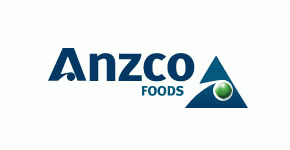
By Allan Barber
ANZCO Foods posted an after tax profit of $12.2 million for 2013, citing rumours as the reason for getting the announcement out to the market in advance of the legal requirement.
The company usually leaves it to the last minute with the result being posted on the Companies Office website at the end of March or early April.
As one of the big four and the only company apart from the cooperatives and minnow Blue Sky Meats to release an annual result, ANZCO clearly felt the need to puff out its chest and show how well it had performed against its competitors.
The fourth company, AFFCO, is a wholly owned subsidiary of Talley’s and is not required to release its results publicly, although the word from its farmer meetings suggests it may have done even better than ANZCO.
The meat industry is clearly not dead yet in spite of the continued warnings of its impending demise, but the spectre of the falling national sheep flock and less lambs to slaughter hangs over it. Nor will this spectre go away in a hurry.
Sir Graeme Harrison, ANZCO’s chairman, came out this week with a warning that something must happen to resolve the industry’s over capacity problem, either market forces or a managed process.
ANZCO had worked with Silver Fern Farms and Alliance to put together a proposal to the government for the introduction of tradable slaughter rights, but received the predictable response that they didn’t represent a large enough portion of the industry.
The government seems to have imposed a threshold of 80% of companies and farmers before it is willing to legislate, but this proved too high a bar five years ago and seems equally unlikely now.
Although Alliance posted a modest profit for 2013 and has a reasonably strong balance sheet, the cooperatives appear to be the weak link.
SFF’s balance sheet is especially vulnerable to the downturn in sheep numbers and any hint of another procurement war, although this will also affect Alliance’s performance during this season and next.
The banks will be watching very carefully for any signs of increasing procurement competition and the impact on seasonal funding facilities.
-------------------------------------------------------------------------------------------------------------------------------------------
Farms For Sale: the most up-to-date and comprehensive listing of working farms in New Zealand, here »
-------------------------------------------------------------------------------------------------------------------------------------------
Although SFF’s new bank facilities have been put in place for two years until 31 October 2015, according to the annual accounts they require a debt reduction of $98 million from the 2013 closing figure.
Term debt funding must reduce from $200 million to $160 million by 1 October next year and seasonal debt funding must reduce by $58 million by 30 September.
Seasonal funding for the 2014/15 year has not yet been agreed and must be renegotiated before 30 September. SFF is also still carrying some debt from the purchase of Richmond more than 10 years ago.
Therefore while the meat industry is not generally in great shape with too much capacity for the available livestock, it is clearly a two speed industry.
Some companies are performing much better than others and this makes it hard to see how general agreement can possibly be reached across the industry.
ANZCO has put a stake in the ground by releasing its profit figure as proof that it is on the right side of the industry divide.
Alliance faces a challenge to secure its place on the profitable side of the industry, while SFF is on the wrong side with little prospect of being able to generate enough cash to reduce debt by $98 million within nine months.
This year could see some major developments in the structure of the meat industry.
---------------------------------------------------------------------------------------
Here are some links for updated prices for
- lamb
- beef
- deer
- wool
No chart with that title exists.
---------------------------------------------------------------------------------------
Allan Barber is a commentator on agribusiness, especially the meat industry, and lives in the Matakana Wine Country where he runs a boutique B&B with his wife. You can contact him by email at allan@barberstrategic.co.nz or read his blog here ».
1 Comments
So what will ANZCO do with the profit, dribble the bear minimum out to drystock farmers and undercut SFF (cooperative in name only)? Poor suckers, farmers have only ever realised long term value by pooling resources and working together in cooperatives. However beware charlatans such as SFF, or the Fonterra model! Supplying to investor owned processors, they'll always be at the bottom of the heap.
Looks like a few Fonterra directors (like SFF, cooperative in name only) are offering the meat industry some 'advice'. As I said, poor suckers, more things change, more they stay the same

We welcome your comments below. If you are not already registered, please register to comment
Remember we welcome robust, respectful and insightful debate. We don't welcome abusive or defamatory comments and will de-register those repeatedly making such comments. Our current comment policy is here.